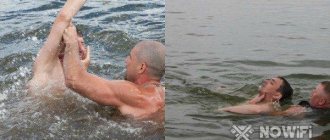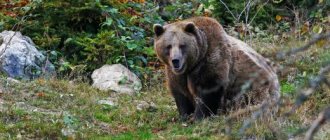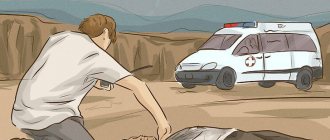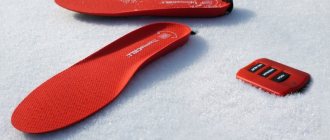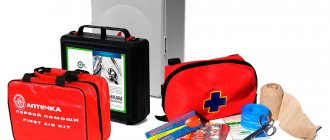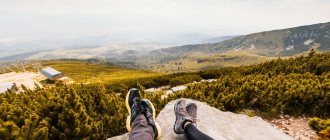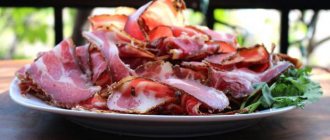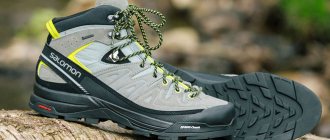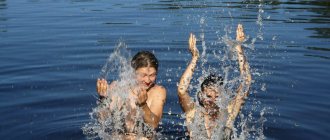Heart massage.
Cardiac arrest occurs with a direct blow to the heart, with drowning, suffocation, gas poisoning, with electric shock, with inhibition of the center that controls blood circulation located in the medulla oblongata, with some heart diseases, mainly with myocardial infarction, with insufficient long-term breathing Cardiac arrest is also observed with heat stroke, blood loss, burns and freezing.
Due to cardiac arrest, blood circulation ceases, resulting in clinical death. In this case, the only way to save the victim’s life is cardiac massage. When the heart stops, it is necessary to cause its contraction and stretching artificially. Cardiac massage is an effective measure of revitalization when combined with artificial respiration; It is necessary to carry out artificial respiration, since when a person’s heart stops, breathing also stops.
If only one person revives the victim, then he must perform both cardiac massage and artificial respiration at the same time. For 15 chest pressures, 3 artificial breaths are given. Cardiac massage is a measure that requires great caution, so it is used only in cases of extreme necessity.
Assisting a drowning person
Water and grass are removed from the mouth, nose, and respiratory tract. To do this, the drowning person is placed face down, with his stomach on his knee and pressed on his back. Then they begin artificial respiration. The most effective way of blowing air is “mouth to mouth” or “mouth to nose”. The drowning person is placed on his back and a cushion of clothing is placed under his neck, so that his head is thrown back. The person providing assistance blows air into the victim’s mouth 18-20 times a minute through a handkerchief or gauze, while pinching his nose. Exhalation is carried out passively. If the victim’s jaws are clenched and it is impossible to open his mouth, carry out mouth-to-nose breathing, as well as mouth-to-mouth breathing. In the case when a drowning person does not have a heartbeat, indirect cardiac massage is performed simultaneously with artificial respiration. It is performed by jerky, rhythmic pressing of the palms placed one on top of the other (crosswise) in the heart area to the left of the sternum in the area of the 4th-5th rib. Jerky presses should occur at a frequency of 70 times per minute.
Signs of a burn:
1. Take the victim out of the affected area, if clothes are on fire, extinguish them 2. Quickly cool the affected area with cold water, cool for 15-30 minutes, cool chemical burns with running water 3. Remove clothes, or better cut them, if there are areas where clothes are stuck to the skin, cut it off at the edges and leave it 4. Give a painkiller 5. Dress it, but not tightly, just so that no dirt gets in 6. Immobilize the damaged surface 7. Give plenty of sweet tea or salted water 8. Take to the hospital
Recommendations:- It is not advisable to pierce the bubbles
- Don't pick off stuck clothes
- It is advisable not to lubricate the affected skin with anything.
First aid for a casualty on a hike
In one of our previous lessons, we talked about the fact that in the case of multi-day hiking trips, their participants cannot count on immediate help in the event of an emergency. Therefore, one of the essential attributes of tourist equipment is a first aid kit. Let us remind you that a first aid kit is a set of medicines, tools and devices designed to provide first aid.
What is “first aid”? First aid is the simplest, necessary measures taken to save a person’s life and prevent complications in the event of an accident or sudden illness before qualified (medical) medical care is provided.
It does not involve the use of any special medical instruments or medications. And it can be provided by anyone with the necessary knowledge. Although tourists, as a rule, do not get sick much on hikes, when going on a hike, you still need to know how, if necessary, to help yourself and a friend.
First aid is perhaps the only section of tourist training where the scope of knowledge should obviously be wider than is dictated simply by field practice. Therefore, the information that will be discussed in our lesson does not replace the need to become familiar with first aid from books specifically devoted to this issue. Now let's move on to considering various cases that require assistance.
Diaper rash, scuffs and blisters.
These minor, but nevertheless unpleasant and annoying injuries are very common among tourists, especially beginners. It is hardly possible to find a tourist who would not be familiar with them from bitter experience. Most often they are on the legs. A common cause of such damage is failure to follow advice on the selection of socks, insoles and shoes. As well as non-compliance with personal hygiene rules while hiking.
Personal hygiene is a set of hygienic rules, the implementation of which helps to preserve and strengthen human health. Personal hygiene includes taking care of your body, teeth and hair, clothes and shoes.
At home, you have everything you need to maintain the rules of personal hygiene, so it’s easy to constantly monitor the cleanliness of your body and take care of your clothes and shoes. You just need to not be lazy to do it. It is much more difficult to comply with the requirements of personal hygiene rules in the natural environment. Here personal hygiene becomes important to ensure human safety.
When traveling, special attention should be paid to caring for your feet, and first of all, carefully monitor their cleanliness. On the eve of the hike, you need to wash your feet clean and cut your nails. If conditions permit, at large and small rest stops it is advisable to take off your boots and socks to give your feet a rest.
In the evening, before going to bed, don’t be too lazy to go wash your feet, at least without soap. In this case, you need to inspect the skin of your feet, treat any cracks, scratches, diaper rashes and abrasions on it.
Help with diaper rash and chafing consists of washing the irritated areas with water (without soap) and lubricating them with baby cream. In this case, in the morning you need to get rid of the cause that caused the damage - dirty socks, stray insoles, and the like.
If painful blisters have formed, then, first of all, there is no need to try to puncture them, which is often done at home.
In many cases, the bubble will subside on its own once the causes that caused it are eliminated. And a puncture creates an additional risk of infection - while traveling, the tourist’s feet are in conditions that are far from sterile.
When traveling, it is important to constantly monitor the cleanliness of your skin. The skin protects the internal organs and muscles of a person from bruises, from solar radiation, and from the penetration of various microorganisms and pathogens into the body. During camping life, it is necessary to wash the body with soap and water at every evening halt to remove sweat, sebum and dirt from the skin that have accumulated during the day's march.
If there is severe redness on the skin, you should lubricate it with iodine, alcohol or a thick solution of potassium permanganate. And then seal it with a bactericidal plaster.
When hiking, it is also important to keep your hair clean and in good condition. In order to protect them from excessive sun exposure, dust, branches, insects and ticks, it is necessary to wear a hat. In addition, your hair should be combed regularly.
Let us also remind you that a tourist’s clothing should be light, comfortable, not restrict his movements and not impair blood circulation and breathing. Shoes must also be appropriate for the hiking conditions. It should not constrain the leg or interfere with the natural movement of the foot. Clothing and shoes must be appropriate for the season.
The next type of injury that can happen on a hike is wounds.
. As a rule, these are small wounds - someone cut their hand while cutting bread, someone's can opener fell off while opening canned food, and the like.
Help in this case is very simple. It is necessary to let the blood drain a little in order to remove any dirt that could get into the wound. Treat the edges of the wound with iodine, brilliant green or alcohol. Then cover with an adhesive plaster or bandage with a narrow sterile bandage. With such an injury, as a rule, you can continue the hike.
Deep wounds
among the participants of the hike - this is an extremely rare matter, and almost all of them come down to chopping the legs with an ax (less often the arms). With a deep wound, a lot of blood is released, and the first thing to do is to stop the bleeding as soon as possible. This is usually achieved by applying a pressure bandage: the skin around the wound is treated with iodine or alcohol, a sterile dressing material and cotton wool are placed on the wound and bandaged tightly.
But sometimes the measures taken are not enough. Then a tourniquet is used. It is used when bleeding occurs from a limb. That is, it can only be applied to two places - the shoulder (this is the part of the arm above the elbow) and the thigh (this is the part of the leg above the knee). Even if the victim has an injured finger, the tourniquet is still applied to the shoulder, but as close as possible to the wound.
A tourniquet is a very serious, very effective, but also very dangerous way to stop bleeding.
Therefore, it can be used only in extreme cases, for example, when no other actions to stop the bleeding help.
It is important to remember that the tourniquet cannot be applied to a naked body - you must place some kind of fabric under it. Then the tourniquet is stretched and made two or three turns around the limb along the underlying tissue. In this case, the limb must be tightened so that the bleeding stops. And below the place where the tourniquet was applied, the pulse was not palpable.
If you don’t have a medical tourniquet on hand, you can use a twist tourniquet made from available materials (belt, towel or thick rope).
The material from which the twist is made is wrapped around the limb covered with bedding and tied with a knot on the outside. Then any stick-shaped object is threaded into this knot and twisted until the bleeding stops. Having twisted to the required degree, the stick is fixed so that it cannot unwind spontaneously.
After applying the tourniquet, a piece of paper must be attached to it indicating the exact time the bandage was applied (this information can also be written on the victim’s forehead). This is done due to the fact that the tourniquet can be applied for no more than 1.5-2 hours in the warm season and for no more than 1 hour in the cold season. In this case, every 25-30 minutes it is necessary to release the pressure for about thirty seconds to prevent tissue death.
If the injury is deep, the hike cannot continue, and all the group’s efforts are devoted to organizing the transportation of the victim to the nearest medical facility.
Burns
usually occur at a bivouac as a result of careless handling of the fire or general disorder around the fireplace. Most often, these are small and harmless burns: someone grabbed the hot handle of a bucket or, while straightening the firewood, touched the coals with their hand.
For minor burns, it is recommended to quickly place the burn site in cold water for about 15 minutes. Then apply a compress of gauze pads soaked in alcohol (cologne, dark red solution of potassium permanganate or baking soda). Usually this is enough. And the painful redness that forms at the burn site goes away after 2-3 days. For more severe burns, a tight bandage is applied to the burned area for about 15 minutes. This greatly prevents the formation of bubbles.
Minor bruises
(without compromising the integrity of the skin) - this is also a fairly common injury on a hike.
Seeing that the skin is not damaged, the young tourist is inclined not to attach any importance to the incident, and soon swelling and bruising appear at the site of the bruise. There's nothing wrong with that. But the joy of the hike can be ruined. Therefore, we must remember that even with a small bruise, you must immediately apply cold to the site of the bruise (a handkerchief dipped in water, some metal object: a knife, an ax, a mug, and so on). Cold helps stop bleeding in soft tissues and prevents painful bruising and swelling. Important!
The cold should be kept on the bruised area for 25-30 minutes. Joint sprains
occur when moving in a direction unusual for the joint. These injuries are much less common than bruises; This usually happens to the ankle, less often the knee joint. The reason, as a rule, is the carelessness of the tourist while moving: he stared at the tops of the trees and did not look at his feet, or, continuing to walk, turned back to talk to a friend and suddenly - a sudden pain: he stumbled, his leg twisted. First aid in such cases is cold and a tight bandage that limits the movement of the joint (preferably an elastic bandage).
Dislocations and fractures
- injuries are extremely rare, but nonetheless. The main sign that allows you to distinguish a dislocation from a sprain is a gross change in the configuration of the joint, an unnatural position of the limb and the inability to move in the joint due to severe pain. It should be remembered that even a doctor cannot always correct a dislocation on the spot. Therefore, you should not try to do this on your own.
First of all, it is necessary to exclude the possibility of movement in the damaged joint. The hand is suspended on a scarf (towel, loop of bandage, etc.) thrown over the neck. A splint made from available material is placed on the leg. Next, you should give cold to the injured joint and painkillers, such as analgin, orally and take measures to quickly deliver the victim to the medical center.
Now let's talk about fractures
. You probably know that human bones are quite strong formations that can withstand very heavy loads. However, like any material, their possibilities are not limitless. And, under certain conditions, they can break - a fracture occurs.
A fracture is a complete or partial disruption of the integrity of a bone under the influence of mechanical force or disease.
Based on the integrity of the skin, open and closed fractures are distinguished. For open fractures
A sharp bone fragment ruptures the muscle tissue - a wound appears. Such fractures are the most dangerous, as there is a high probability of severe bleeding and infection of the wound.
For closed fractures
the bone cracks or breaks without damaging the skin.
The first thing to do in case of a fracture is to create immobility of the bones at the site of injury. To do this, use a tire made from available material: boards, sticks, bundles of twigs, reeds or straw, and so on. It is applied in such a way as to immobilize two joints - above and below the fracture site. The splint is not applied directly to the skin - you should definitely make a soft pad from a towel or clothing
.
Under no circumstances should you try to put the bones “in place” with either an open or a closed fracture.
With such an attempt, there is a high possibility of damage to large vessels, nerves, and muscles by the sharp edges of the bone. To prevent this from happening, a splint is actually applied.
In the absence of available material for a splint, the damaged arm is simply bandaged to the body, and the leg to the healthy leg. After this, you need to give painkillers and arrange for the victim to be transported to a medical center.
In conclusion, about one mistake that tourists often make in case of bruises, sprains, and so on. Many who had to go to the clinic with similar injuries remember that the doctor in these cases prescribed heat treatment. And accordingly, on a hike they try to do the same. Meanwhile, this is a grave mistake. Heat can be used no earlier than two days after the injury
, and not at all at the first aid stage. Here, on the contrary, it is necessary to apply cold.
Eye injury
Chemical burnFirst aid.1. Rinse the eye with plenty of water 2. Apply a bandage 3. Transport to a hospital or medical centerRecommendations:
Use glasses in activities where there is a possibility of eye damageVarious eye injuries
Signs
:
- Pain
- A tear
- The voice turns red
- Eyelids swell and turn red
1. Drop sodium sulfacyl (albucid) into the eye 2. Apply a clean bandage 3. Give pain relief 4. If vision deteriorates, transport to hospital
Nose bleed
Signs of bleeding:
- Nose bleeds when hit
- Or the appearance of blood on its own for no apparent reason
1. Place the victim in a sitting position 2. Tilt the head forward 3. Squeeze the nostrils from the sides for 10 minutes 4. After stopping the bleeding, do not remove blood clots or do heavy physical exertionRecommendations:
- Consult a doctor if bleeding does not stop within 15 minutes
- Before going to the doctor, insert tampons into your nose
- Contact your doctor if your nose bleeds repeatedly or blood begins to drain down the back of your throat.
Wounds and bruises
In case of wounds and associated bleeding, the main task is to stop the bleeding and protect the damaged surface from contamination. Severe bleeding, which occurs when large blood vessels are injured, can be stopped by applying a tourniquet or twist from an auxiliary material. For this purpose, you can use a belt, scarf, or piece of material. The twist must be loosely tied at the desired level to form a loop into which the stick is then inserted. Then you should rotate it, twisting it until the blood stops completely. It should be remembered that keeping the twist in one place for a long time can cause tissue necrosis and even paralysis. To avoid this, the twist must be moved (at least after an hour and a half) higher or lower if the bleeding has not stopped. For minor bleeding, it is enough to apply a pressure bandage from a piece of clean cloth, in the absence of a bandage or an individual bag. It is very important not to contaminate the wound to avoid suppuration. Do not apply earth, tree bark, or snow to the damaged surface. If there is no disinfectant solution, it is best to wash the wound with boiled water. In forest conditions, scratches and abrasions can be lubricated with liquid tree resin. For bruises accompanied by bruising, a cold compress, a pressure bandage and temporary rest are necessary.
Bites. insects (wasps, spiders, hornets, scorpions, etc.)
Signs of a bite:
- Pain
- Tumor
- Redness
- Scabies
1. Pull out the sting 2. Apply something cold or a napkin soaked in vinegar 3. If the bite is accompanied by severe pain, give an anesthetic 4. Lubricate with anti-inflammatory ointment 5. For bites on the face, neck, mouth, quickly inject Dexamethasone or Prednisolone, or Hydrocortisone. Transport the patient to the hospital Recommendations:
Very dangerous bites to the neck, face, mouth, tongue cause swelling that blocks the airways and the person can suffocate.
Signs of a bite:
1. Deliver to the hospital 2. If the hospital is far away, then lay the patient down and do not allow him to get up, walk, or sit 3. Make a stop 4. Give the patient something to drink 5. Try any possible help, give a signal of troubleRecommendations:
- Observe the patient for 2 hours, if no symptoms of poisoning appear, then the bite was not poisonous
- Carry out the same actions with the bite site as with the wound.
- If the bite was in the neck, face, mouth then give an injection: Dexamethasone, Prednisolone, Hydrocortisone
Acute food poisoning
For a mild form of food poisoning, which is accompanied only by slight malaise and mild abdominal pain, you need to drink activated charcoal or its equivalent. If it is severe, rinse the stomach, induce vomiting and drink special medications from the first aid kit. It is better not to use various kinds of solutions for this, but simply drink water and then induce vomiting. The appearance of bile in the vomit will mean complete cleansing of the stomach. The patient needs rest, he needs to be warmed and given plenty of fluids; strong tea or warm water with lemon is best. Firstly, it will settle the stomach, and secondly, it will prevent the development of dehydration, which threatens with poisoning.
Drowning
Can lead to drowning:
- Swimming in unfamiliar waters
- Jumping into the water in unfamiliar places
- Skating on thin ice
1. Check for a pulse 2. Remove dirt and sand from the mouth and nose 3. Proceed with artificial respiration. 4. When water appears in your mouth, put it on your stomach, then lift it with both hands and shake it so that water pours out of the stomach and respiratory tract 5. Main artificial respiration and cardiac massage 6. If possible, call an ambulance Recommendations:
A drowned person, even when quickly removed from the water, resembles a dead person in appearance. There is no time to waste when rescuing a drowning person.
Help for a drowning man
First aid is provided immediately after rescuing a drowning person from the water. Using a bandage or thin scarf, clean the mouth and nose. To remove water from the lungs and stomach, you need to place the person with his stomach on his knee so that the position of the head is lower than the chest, and make several vigorous movements, squeezing the chest. After clearing the airways of water, you should immediately begin artificial respiration. You can breathe air into the victim’s mouth through a bandage, handkerchief, etc. At the same time, you need to do an external cardiac massage by squeezing the chest over the heart area with a rhythm of 1 time per second. Artificial respiration must be continued until spontaneous breathing and heartbeat appear, and in their absence, for at least two hours. The victim must lie on a flat, hard surface.
Reanimation
Severe injuries and illnesses can lead to cardiac arrest, respiratory arrest, and then death.Signs of clinical death
:
- No pulse
- Loss of consciousness
- Lack of independent breathing movements
- Wide pupils
1. Check pulse, breathing, pupils 2. Lay the victim on his back (hard surface) 3. Unbutton clothes 4. Clean mouth and nose 5. Throw head back 6. Open mouth 7. Start artificial respiration and cardiac massage 8. If possible, call ambulance
